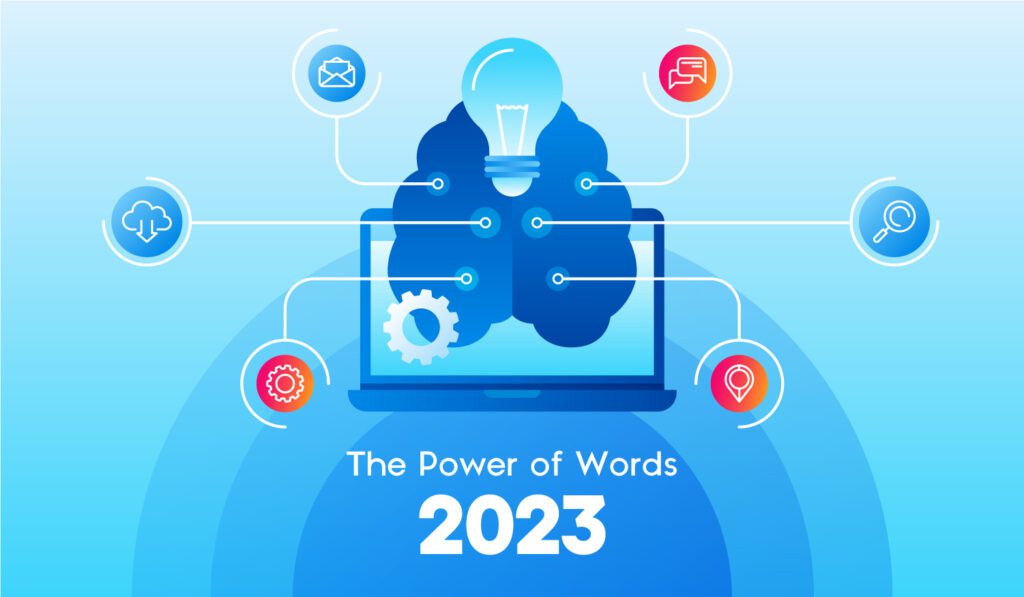The Power of Words 2023: How Natural Language Processing is Revolutionizing Communication
In today’s digital age, communication has never been more important or complex. We rely on language to convey information, express ourselves, and connect with others. However, the sheer volume of data and the diversity of languages and dialects make effective communication a significant challenge. This is where Natural Language Processing (NLP) comes in. NLP is a field of computer science that focuses on the interaction between computers and human language. It involves teaching computers to understand, interpret, and generate human language, using techniques from machine learning and linguistics. With NLP technology, computers can analyze large volumes of text data, understand the sentiment behind it, and even generate human-like responses. Here are some of the ways that NLP is revolutionizing communication in 2023.

Conversational AI
Conversational AI refers to catboats and virtual assistants powered by NLP technology. These systems are becoming increasingly popular in customer service and other industries. With conversational AI, customers can interact with businesses using natural language, rather than having to navigate complex phone trees or online forms. Conversational AI can handle a wide range of queries, from simple requests for information to complex technical support issues. It can even learn from previous interactions to provide more personalized responses in the future.
Sentiment Analysis
Sentiment analysis is the process of using NLP algorithms to analyze large volumes of text data and determine the sentiment or emotion behind it. This technology is being used in areas such as social media monitoring, market research, and customer feedback analysis. With sentiment analysis, businesses can quickly identify customer concerns or complaints and respond in a timely manner. They can also track trends and identify patterns in customer feedback to improve their products or services.
Translation
NLP is making it easier than ever to translate between languages. Neural machine translation systems are becoming more accurate and are able to handle more complex sentences and idiomatic expressions. With translation technology, businesses can expand their reach to new markets and communicate with customers in their native languages. Translation technology is also useful for individuals who want to communicate with friends or family members who speak different languages.
Content Creation
NLP algorithms are now able to generate human-like text, such as news articles or product descriptions. This technology has the potential to revolutionize content creation and marketing. With content creation technology, businesses can produce large volumes of high-quality content quickly and efficiently. This can help them to increase their online visibility and engage with customers in new and creative ways.
Accessibility
NLP technology is also being used to make digital content more accessible for people with disabilities. For example, text-to-speech systems can read text aloud for people with visual impairments. This technology can also help people with reading difficulties, such as dyslexia, to understand written text more easily.
Advantages of Natural Language Processing:
-
Improved communication: NLP makes it easier for machines to understand and generate human language, improving communication between humans and machines and enabling more natural and intuitive interactions.
-
Increased efficiency: NLP can automate repetitive tasks, such as customer service queries or data entry, freeing up human resources for more complex and strategic work.
-
Enhanced customer service: NLP-powered chatbots and virtual assistants can provide 24/7 support, helping customers with a wide range of queries and issues.
-
Improved healthcare outcomes: NLP can analyze large volumes of healthcare data to identify patterns and insights that can inform patient care and improve outcomes.
-
Better language translation: NLP is improving machine translation, making it easier for people to communicate across different languages and cultures.
Disadvantages of Natural Language Processing:
-
Limited understanding: NLP technology still has limitations in understanding context and nuance, leading to errors and misunderstandings in communication.
-
Privacy concerns: NLP-powered systems often require access to large amounts of data, raising concerns about privacy and data security.
-
Bias: NLP algorithms can perpetuate biases and stereotypes in language, which can lead to unequal treatment and discrimination.
-
Lack of human touch: Some users may prefer human interaction over conversational AI, especially in situations where empathy and emotional connection are important.
-
Cost: Developing and implementing NLP-powered systems can be expensive, requiring specialized expertise and resources.
While NLP offers many advantages in transforming the way we communicate, it is important to consider and address these potential disadvantages to ensure that the technology is used ethically and responsibly.
In conclusion, NLP technology is transforming the way we communicate in 2023. With conversational AI, sentiment analysis, translation, content creation, and accessibility technology, we can communicate more effectively, connect with others across language barriers, and create new and innovative ways to express ourselves. As NLP technology continues to advance, we can look forward to even more exciting developments in the future.